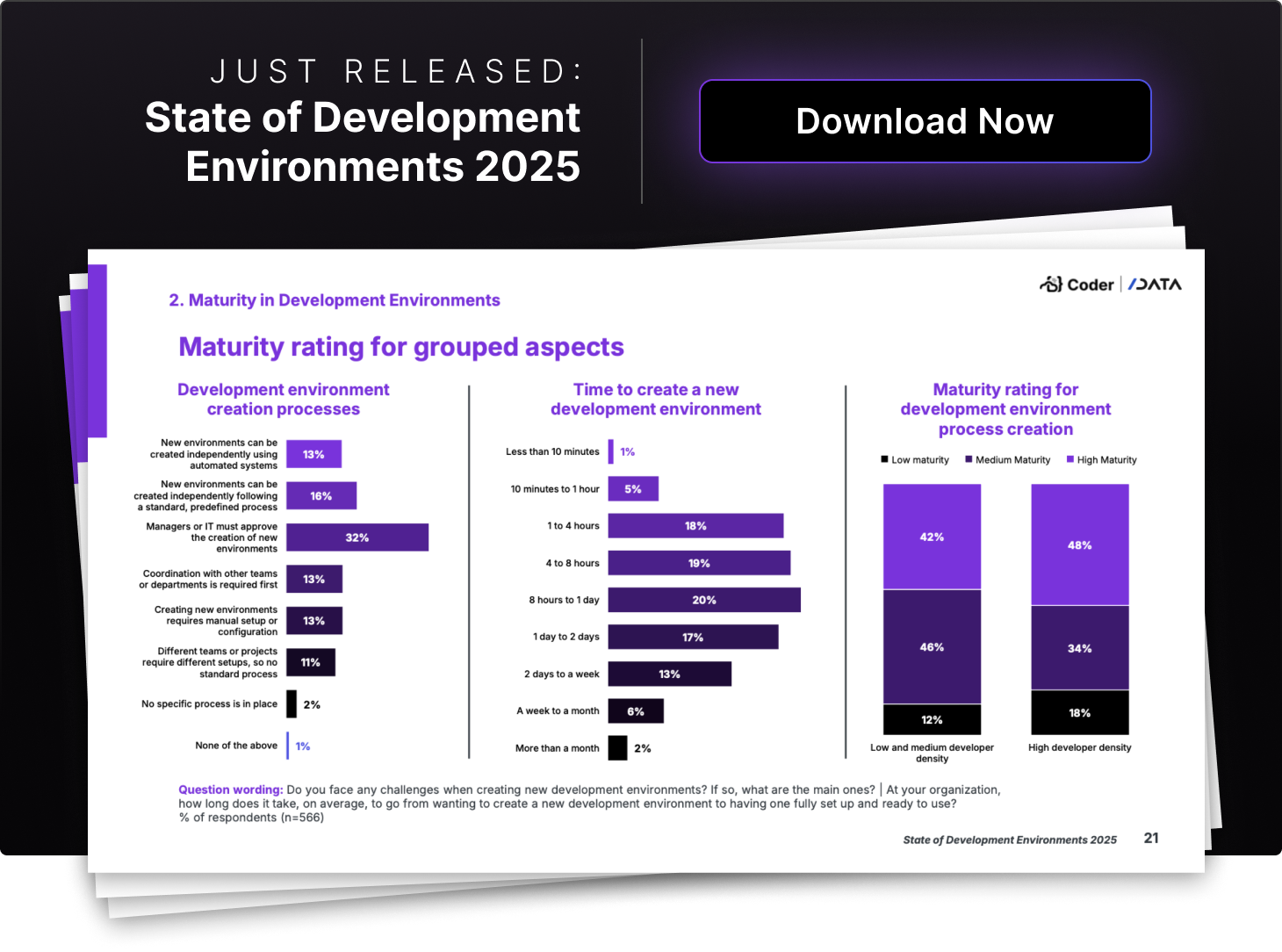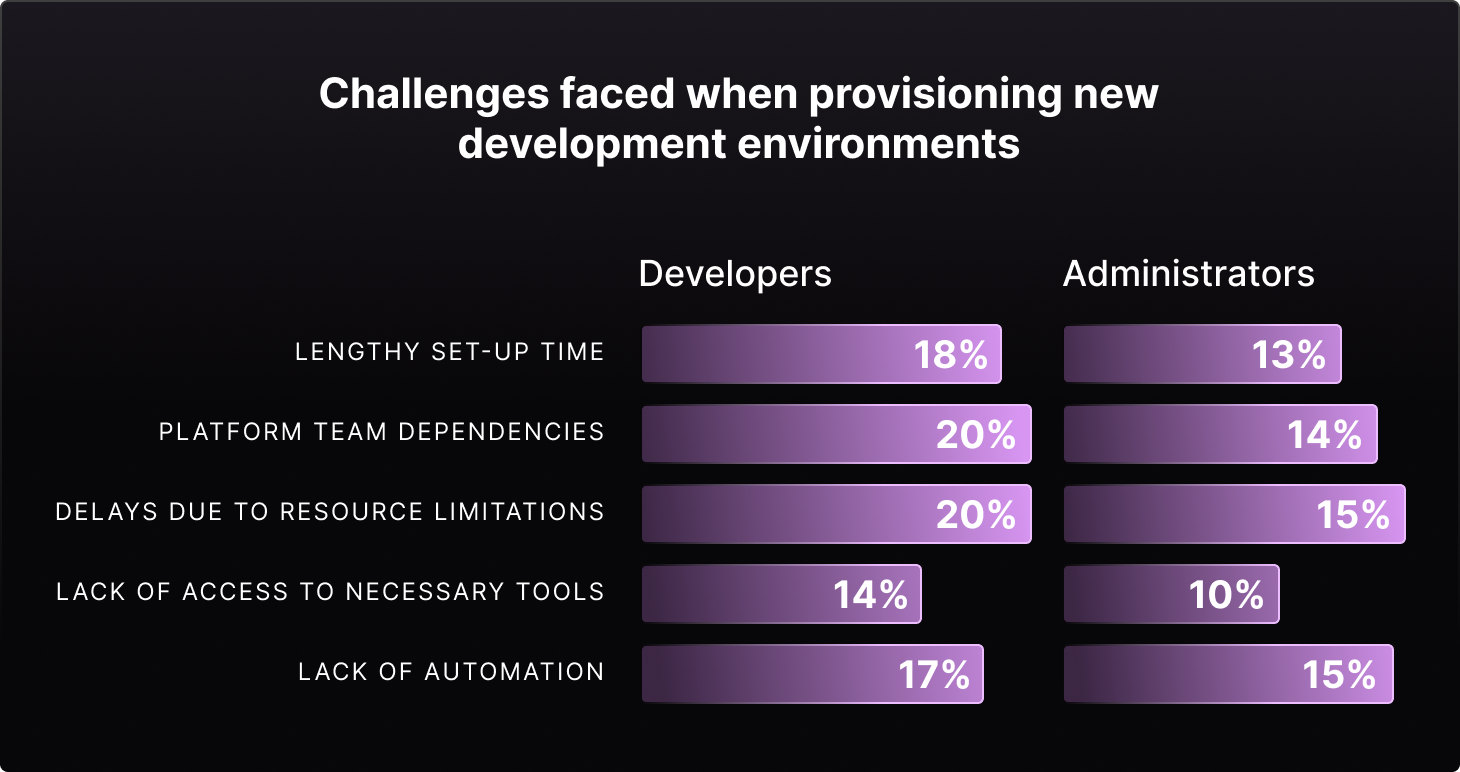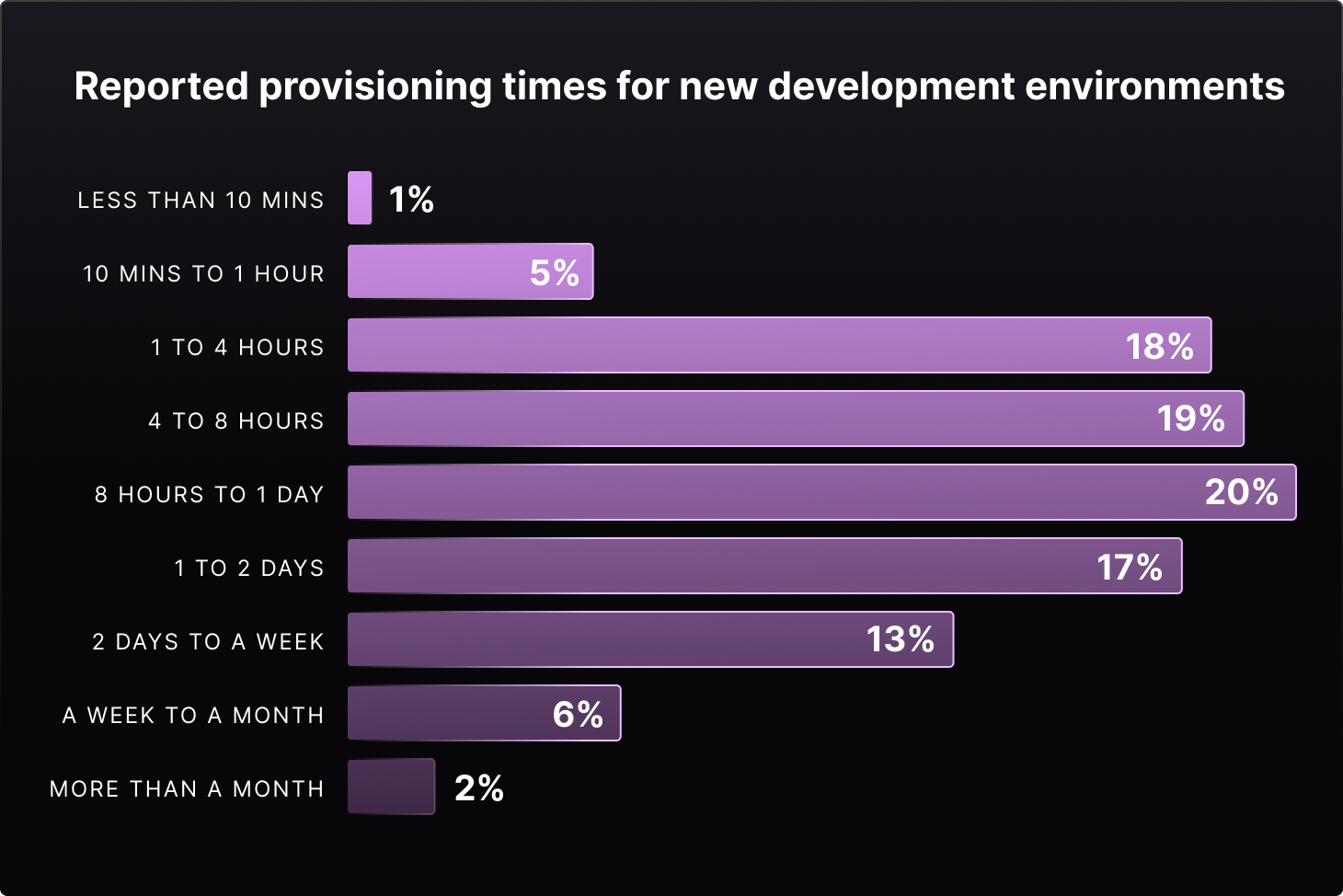We use cookies to make your experience better.
Insights and Key Findings from the State of Development Environments 2025 Report

In collaboration with SlashData, Coder presents the State of Development Environments 2025 Report, examining how organizations are evolving their development environments. Drawing on input from over 550 software professionals at large organizations (with at least 1,000 employees and 200 developers), the report uncovers trends and challenges shaping modern development practices:
- How long it takes platform teams and developers to provision development environments
- The level of autonomy and flexibility developers have while creating and using their environments
- The biggest challenges teams face while creating and managing development environments
- Companies’ plans for standardizing environments over the next three years
While 78% of organizations are prioritizing standardization this year to boost efficiency, security, and collaboration, the report highlights persistent challenges. One major issue is the disconnect between administrators, who provision environments, and developers, who rely on these tools daily—administrators consistently report far higher satisfaction than developers.
A Closer Look Into Enterprise Development Environments
In Q4 2023, we explored how organizations use cloud development environments (CDEs). The study showed that while CDEs can improve developer experience, speed up delivery, and reduce cloud costs, many organizations aren’t taking full advantage of these benefits. Surprisingly, 95% of respondents claimed familiarity with CDEs, which raised questions about the depth of their understanding.
This report offers more insights into how companies are using development environments—including cloud development environments.
These benchmarks help teams evaluate their current setup and identify areas where platform engineering teams can bridge the gap between what these environments are capable of and what developers think they can do.
Our goal was to provide clarity and guidance for teams working to modernize their environments and improve collaboration.
Key Insights for Platform Engineers
Here are some of the key insights we walked away from this report with. In the coming weeks, we’ll be sharing more in-depth looks and opinions on these findings—most importantly, our perspectives on how platform engineers can improve the developer experience by reducing friction with development environments.
The Developer-Admin Disconnect
Administrators consistently rate development environments more favorably than developers, especially in areas like governance, usability, and tool access. This gap highlights differences in priorities and a lack of alignment between those who set up and manage environments and those using them daily.
If you’re unsure how developers in your organization view their setup, start by benchmarking feedback. Tools like DX can help identify areas for improvement and guide actions to improve satisfaction and productivity.

Education is Key to Maximizing Cloud Adoption
Organizations with large development teams favor commercial cloud development environments for scalability and collaboration. However, 79% of respondents using cloud-hosted environments lack clarity about their technical features. This underscores the need for better education and guidance to help teams fully realize their benefits in the implementation process.
Improving Setup Times—A Missed Opportunity?
Only 7% of organizations can create development environments in under an hour, while 21% take more than two days. Despite this, only 14% of respondents have plans to prioritize improving setup times.
This suggests many organizations may underestimate the productivity impact of delays or the potential benefits of alternative configurations.

Balancing Flexibility and Control
Standardization improves security, speeds up provisioning, and provides greater control—but often limits developer autonomy and usability. Only 10-19% of organizations achieve high levels of flexibility, enabling developers to experiment with configurations and tools.
CDEs offer a solution, delivering both control and flexibility without compromising the developer experience.
VDI: A Fading Solution
More than half of respondents are considering Virtual Desktop Infrastructure as part of their standardization plans, despite its high cost and complexity often making it impractical for modern workflows.
Interestingly, VDI is more popular among those planning standardization in 1-2 years but less so among those with imminent plans, suggesting it loses favor as strategies take shape. While still common in enterprises, VDI may decline as modern alternatives gain traction.
Download the report
Whether you’re starting your standardization journey or refining existing processes, this report offers valuable insights and recommendations. Download it here to explore the findings in detail.
Enjoy what you read?
Subscribe to our newsletter
By signing up, you agree to our Privacy Policy and Terms of service.

